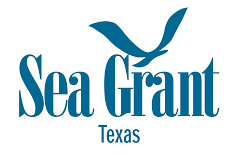Research Projects
Ongoing Studies |
Funding Agency |
Increasing hatchery production of larval eastern oysters, Crassostrea virginica, in the northern Gulf of Mexico through optimization of carbonate chemistry and salinity in source water The Gulf of Mexico (GOM) contains the largest remaining natural oyster (Crassostrea virginica) reefs in the world, and off-bottom oyster aquaculture is expanding in all U.S. GOM states. In the northern Gulf of Mexico, both hypoxia led acidification and freshwater discharge caused salinity stress may threaten oyster growing habitats. In this region, oyster hatcheries draw natural seawwater during operations. However, the temporal and geographic trends in salinity, carbonate chemistry, and other water quality parameters in northern GOM coastal areas from which oyster hatcheries would draw water are currently unknown. In addtion, the interactions between carbonate chemistry and salinity and their effect on hatchery production are also unknown. This project will investigate the effects of brackish water under different alkalinity regimes, acidification conditions, and salinities on the survival and development of larval eastern oysters. We will work with researchers from the University of Southern Mississippi and Auburn University, partnering with shellfish growers from across the region. |
|
|
The human society has had significant influence on the global ocean carbonate chemistry (aka ocean acidification or OA) through fossil fuel combustion, deforestation, and cement production over the past 250 years. In the coastal ocean however, other forcings such as continental nutrient input and physical oceanographic changes can have stronger impacts on both the magnitude of short-term variation and long-term trend in carbonate parameters (pH, carbonate saturation states). Among the NOAA designated Large Marine Ecosystems, the Gulf of Mexico (GOM) remains poorly understood in terms its current OA conditions, despite its ecological and economic significance. In the northwestern GOM (nwGOM), a decadal acidification has been observed in the shelf-slope region with the anthropogenic CO2 contributing to a smaller fraction of CO2 accumulation than that from metabolic production. This acidification effect is significantly greater than that in other tropical and subtropical areas. Unfortunately, whether the observed OA in this region represents a short-term phenomenon or a long-term trend is unknown. Given the fact that nutrient pollution through continental runoff is predicted to worsen due to enhanced hydrological cycle and that future upwelling may become stronger, both as a result of climate change, the nwGOM will likely experience more serious acidification while atmospheric CO2 level keeps increasing. Collaborating with colleauges from NOAA Atlantic Oceanographic and Meteorological Laboratory, Texas A&M University, the Gulf of Mexico Coast Ocean Observing System, and Texas A&M University-Corpus Christi, we will investigate spatial and temporal changes in carbonate chemistry signals in the northwestern Gulf of Mexico for the optiminzation of ocean acidification monitoring effort in this region.
|
|
Completed Studies |
|
Mutidecadal changes in carbonate chemistry and carbon cycle in subtropical estuaries (NSF-CAREER) (OCE-1654232) This is a five-year project that started in May 2017. The objectives of this project include studying the effect of hydrologic condition on CO2 fluxes in a subtropical estuary (Mission-Aransas) and examining changes in estuarine pCO2 and explore the controlling factors in estuaries along the entire Texas coast using mutidecadal monitoring data from Texas Commission on Environmental Quality. Broader involvement of both high school (Foy Moody High School) and undergraduate students in aquatic science education is an integral part of this project. This study benefits from strong support from the Mission-Aransas National Estuarine Research Reserve housed in the University of Texas Marine Science Institute. The central hypotheses of this study are: H1: Hydrologic state exerts primary control on CO2 fluxes. Riverine input dominates CO2 flux during the fluvial state, and within estuary processes (coastal ocean input, evaporation, and respiration) dominate during the lagoonal state. H2: Because rivers carry significant amount of allochthonous organic carbon and high levels of CO2, a reduction of estuarine pCO2 and CO2 flux caused by multidecadal riverine input reduction should occur. H3: Oxidation of sedimentary reduced sulfur due to sediment resuspension causes alkalinity reduction during the freshwater-starved conditions; estuaries with transitioning hydrologic state from fluvial to lagoonal state will have increasing potential for net alkalinity removal. The above hypotheses can be summarized in the following conceptual models that depict the contrasting behaviors during the two different hydrologic states. |
 |
Effect of Hurricane Harvey on Estuarine Biogeochemistry (NSF-RAPID) (OCE-1760006) Hurricane Harvey made landfall Friday 25 August 2017 at 22:00 Central Time about 30 miles northeast of Corpus Christi, Texas as a Category 4 hurricane with winds up to 130 mph. This is the strongest hurricane to hit the middle Texas coast since Carla in 1961. After the wind storm and storm surge, coastal flooding occurred due to the storm lingering over Texas for four more days, dumping as much as 50” of rain near Houston. This will produce one of the largest floods ever to hit the Texas coast, and it is estimated that the flood will be a 1:1000 year event. The Texas coast is characterized by lagoons behind barrier islands, and their ecology and biogeochemistry are strongly influenced by coastal hydrology. Because this coastline is dominated by open water systems and productivity is driven by the amount of freshwater inflow, Hurricane Harvey represents a massive inflow event that will likely cause state shifts and regime changes to the coastal environments. Therefore, questions arise regarding how biogeochemical cycles of carbon, nutrients, and oxygen will be altered, whether massive phytoplankton blooms will occur, whether estuarine species will die when these systems turn into lakes, and how long recovery will take? Teaming up with colleagues Drs. Paul Montagna and Michael Wetz, we have initiated sampling in three south Texas lagoonal estuaries in 2013, including Lavaca-Matagorda, Guadalupe-San Antonio, and Nueces-Corpus Christi estuaries. The goal of our part of the project is to examine estuarine water carbonate changes before and after the storm, and obtain information on changes in surface water CO2 partial (pCO2) pressure as a result of the hurricane induced massive freshwater inflow. In addition to these estuaries, we also started piggybacking on Dr. Hui Liu’s NSF-RAPID project to examine pCO2 and water chemistry in the largest coastal bay in Texas – Galveston Bay.
|
 |
Groundwater influence on carbonate chemistry in Copano Bay In collaboration with Dr. Dorina Murgulet's group, we examine fluxes of groundwater and associated dissolved solutes (alkalinity, major ions) using a variety of techniques including continuous resistivity survey, continuous radon survey, and porewater sampling and analyses. In addition, we also examine the chemical changes in water column in the Copano Bay to assess groundwater influence. This project is funded by the Coastal Management Program, which is funded by the National Oceanic and Atmospheric Administration and managed by the Texas General Land Office.
|
  |
Hydrologic control on estuarine hypoxia and acidification Following our 2015 study that revealed the long-term "de-alkalinization" in most Texas estuaries potentially as a result of reduced river freshwater inflow as well as multidecadal studies on the hypoxia issues in Texas Bays by Drs. Paul Montagna and Michael Wetz, we hypothesized that hydrologic control acts as a switch, where increased flows cause episodic hypoxia (hence short-term acidification) due to increased loads of organic matter, and reduced flows cause long-term acidification due to reduced loads of riverine alkalinity and benthic calcification. We have been working on four south Texas estuaries including Lavaca-Matagorda, Guadalupe-San Antonio, Mission-Aransas, and Nueces-Corpus Christi estuaries as well as studying carbonate chemistry of rivers that discharge into these estuaries, the later in collaboration with Dr. Zhanfei Liu's group at the University of Texas Marine Science Institute.
|
 |
In situ ocean acidification monitoring (data access, password protected) We have partnered with the Coastal Bend Bays and Estuaries Program with funding provided by the U.S. Environmental Protection Agency and carried out high temporal resolution monitoring of surface water CO2 partial pressure and pH at the Port Aransas ship channel. Unfortunately, an accident after the Hurricane Harvey destroyed the deployment platform for the sensors. Monitoring work is currently on hold and we are working on data interpretation and analysis.
|
  |
Mechanistic modeling of dissolved oxygen level in Baffin Bay (data access, password protected) Baffin Bay has been the subject of intensive water quality studies since 2013, largely in response to concerns over persistent algal blooms, fish kills, and hypoxic events. In order to quantify the D.O. sources and sinks, we are building a mechanistic D.O. model. This model is able to simulate D.O. dynamics in the Baffin Bay, it can also predict the D.O. behavior under the different stress scenarios in the future (eutrophication and temperature increase).
|
 |
Mechanisms of hypoxia formation in two eutrophic estuaries in semiarid south Texas In the past 1-2 decades, significant land use change has occurred in the watersheds of Baffin Bay and Oso Bay, resulting in growing expression of symptoms of eutrophication. Hypoxia and excessive phytoplankton growth, which are quite possibly intricately linked, are two of the primary concerns because of their potential effects on ecosystem health and/or fisheries in these bay systems. Land use changes resulted enhanced transport of terrestrially-derived organic carbon along with nutrient by streams and storm runoff. However, it was not clear which organic source, i.e., allochthonous organic carbon (terrestrial carbon) or autochthonous organic carbon (phytoplankton production as a result of eutrophication) dominated bottom water respiration in these environments. We have collaborated with Dr. Michael Wetz's group and studied oxygen consumption dynamics during 2013-2016 period, we also investigated stable carbon isotopic composition of respiration organic carbon in both the water column and the surface sediment, in an effort to elucidate the type of organic carbon that contributed water column respiration.
|
 |
Dynamics of Dissolved Inorganic Carbon and Dissolved Oxygen Following Natural or Man-made Petroleum Carbon Release into Marine Environments (data access, host on the server of the Gulf of Mexico Research Initiative Information and Data Cooperative or GRIIDC) For a recently completed project, we have examined the impact of the Deepwater Horizon Oil Spill that occurred in 2010 on the CO2 and O2 dynamics of the northern Gulf of Mexico continental shelf waters. As a result of this study, coastal ocean acidification in the hypoxic zone and control factors gradually turned to the center of the attention. This work was funded by the Gulf Research Initiative. |
 |



